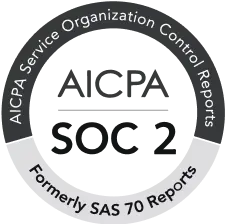The Single Euro Payments Area (SEPA) has revolutionized the way we handle payments across Europe, making transactions faster, cheaper, and more transparent. This comprehensive guide will delve into what SEPA is, how SEPA payments work, and how you can make the most of this payment system.
What is SEPA?
SEPA is a payment initiative established by the European Payments Council (EPC) and supported by the European Commission, the European Central Bank, and the European banking sector. Its purpose is to make cross-border euro transfers as simple and efficient as domestic transfers. SEPA covers 36 countries: the 27 EU member states, plus Iceland, Norway, Liechtenstein, Switzerland, Monaco, San Marino, Andorra, and Vatican City.
What are SEPA transfers?
SEPA stands for Single Euro Payments Area, a payment-integration initiative of the European Union for simplification of bank transfers denominated in euros. The goal of SEPA is to create a single domestic market for euro-denominated payments. This means that bank transfers within the SEPA zone are treated the same as domestic transfers, with uniform standards and fees.
At the heart of SEPA’s smooth operation lies a network of participating financial institutions called SEPA banks. SEPA banks ensure all transactions comply with the established rules and regulations for SEPA transfers. This guarantees consistency, efficiency, and security across the entire SEPA zone.
Whether it’s a standard SCT, recurring SDD, or an instant SCT Inst transfer, SEPA banks have the infrastructure and expertise to handle these transactions seamlessly. No matter your location within the SEPA zone, SEPA banks ensure your euro transfers reach their intended recipient quickly and securely, regardless of borders.
What is a SEPA Zone?
The SEPA zone includes all EU member states and several non-EU countries that have adopted the euro or have close financial ties with the EU. The full list of SEPA zone countries is as follows:
EU Member States:
Austria, Belgium, Bulgaria, Croatia, Cyprus, Czech Republic, Denmark, Estonia, Finland, France, Germany, Greece, Hungary, Ireland, Italy, Latvia, Lithuania, Luxembourg, Malta, Netherlands, Poland, Portugal, Romania, Slovakia, Slovenia, Spain, Sweden.
Non-EU Countries:
Iceland, Norway, Liechtenstein, Switzerland, Monaco, San Marino, Andorra, Vatican City.
Key features of SEPA transfers
The Single Euro Payments Area (SEPA) revolutionized cross-border payments within the European Union (EU) and some surrounding countries. It established a standardized system for electronic euro transfers, offering significant benefits for businesses and individuals alike. Here’s a breakdown of the key features of SEPA transfers:
1. Standardization and efficiency
- SEPA eliminates the distinction between domestic and cross-border euro transfers. This means the same process and rules apply regardless of whether you’re sending money within your own country or to another SEPA member state. This simplifies the process and reduces complexities compared to traditional international transfers.
- Standardized formats: SEPA uses the International Bank Account Number (IBAN) and Bank Identifier Code (BIC) for identification, ensuring faster and more accurate processing of transfers.
2. Speed and convenience
- Faster settlement times: Standard SEPA Credit Transfers (SCT) typically settle within one business day, significantly faster than traditional wire transfers which can take several days.
- SEPA Instant Credit Transfer (SCT Inst): This option offers near-real-time settlement, crediting the recipient’s account within seconds of sending the transfer. This is ideal for urgent payments.
- 24/7 availability (SCT Inst): SEPA Instant Credit Transfers are available 24 hours a day, 7 days a week, 365 days a year, unlike standard SCTs which are processed during business hours.
3. Cost-effectiveness
- Reduced fees: SEPA regulations aim to ensure transparency and fairness in pricing. In theory, the same fees should apply for both domestic and cross-border SEPA transfers within the SEPA zone. However, it’s advisable to check with your bank for any potential charges they might apply.
- Elimination of hidden costs: Unlike traditional international transfers, SEPA transfers avoid hidden fees from intermediary banks. The sender pays a single, transparent fee to their bank, ensuring the recipient receives the full amount.
4. Security and reliability
- SEPA adheres to strict security standards to protect financial transactions. Encryption and authentication protocols minimize the risk of fraud and unauthorized access.
- SEPA leverages the existing infrastructure of European banks, ensuring a reliable and well-established network for processing transfers.
5. Increased transparency
- Standardized messaging: SEPA uses standardized messaging formats, allowing for better tracking and tracing of transfers. This enhances transparency throughout the payment process.
- Dispute resolution mechanisms: SEPA regulations establish clear procedures for handling errors or disputes that may arise during transfers.
6. Wider applicability
- SEPA extends beyond the EU: While originally established for the EU, SEPA has expanded to include Iceland, Liechtenstein, Norway, Switzerland, Monaco, and San Marino. This broader reach facilitates smoother cross-border payments within this wider European zone.
SEPA transfer options: Sending and receiving euros smoothly
Let’s look at the key SEPA components for sending and receiving euros:
- SEPA Credit Transfer (SCT): This is your go-to option for one-time euro payments. Need to send money to a friend in France or pay a supplier in Italy? SCT allows you to transfer funds directly from your bank account to another account within the SEPA zone. The transfer is typically processed within one business day, making it a convenient and efficient solution for most situations.
- SEPA Direct Debit (SDD): For recurring payments like monthly phone bills or gym memberships, SEPA Direct Debit (SDD) streamlines the process. This option allows a company or organization to automatically collect payments directly from your bank account at predetermined intervals. There are two SDD schemes: Core, designed for consumer transactions like utility bills, and B2B, catering to recurring business-to-business payments.
- SEPA Instant Credit Transfer (SCT Inst): Need an even faster solution? Look no further than SCT Inst, the instant euro transfer option. This innovative feature enables funds to be transferred within seconds, 24/7, across participating banks within the SEPA zone. Imagine paying a freelancer in Spain and they have access to the funds immediately – that’s the power of SCT Inst!
Step-by-Step Process for making a SEPA credit transfer
1. Access your bank’s online platform or mobile app.
2. Select the option to make a new SEPA transfer.
3. Enter recipient details and include the following:
– IBAN (International Bank Account Number): The recipient’s bank account number in IBAN format.
– BIC (Bank Identifier Code): The recipient’s bank’s identifier code (often optional for SEPA transfers).
4. Enter the amount you wish to transfer, and a description or reference for the payment (optional).
5. Review the details and confirm the payment. The funds should reach the recipient’s account by the next business day.
Step-by-Step Process for making a SEPA direct debit
1. Provide the creditor with a signed mandate authorizing them to debit your account.
2. Give the creditor your IBAN and BIC for the direct debit.
3. The creditor initiates the direct debit based on the agreed schedule.
4. You’ll receive a notification from your bank when the direct debit is processed.
Step-by-Step Process for making a SEPA Instant Credit Transfer
1. Ensure your bank supports SEPA Instant Credit Transfers.
2. Select the option for an instant SEPA transfer.
3. Enter recipient’s IBAN and BIC details.
4. Enter the amount to be transferred and a payment reference (if needed).
5. Confirm the details and authorize the instant payment. The funds should reach the recipient within seconds.
SEPA payments for Middle Eastern businesses: Pros and Cons
SEPA offers potential benefits for Middle Eastern businesses dealing extensively in euros with European partners. However, the limited reach and currency conversion costs require careful consideration. Businesses should weigh these factors against existing regional payment options and emerging technologies before deciding if SEPA integration is worthwhile.
Pros:
- Efficiency for euro-based transactions: If your business deals with European partners and uses euros, SEPA offers faster settlement times (typically within a day) compared to traditional wire transfers. This can improve cash flow and reduce administrative burdens.
- Standardized format: SEPA uses a standardized format (IBAN) for account identification, streamlining the payment process and minimizing errors.
- Potential cost savings: SEPA transactions often come with lower fees compared to traditional wire transfers, especially for high-volume transactions.
Cons:
- Limited applicability: SEPA primarily benefits businesses dealing in euros with European counterparts. The Middle East has its own regional payment networks, which might be more relevant for most transactions.
- Currency conversion: If your business doesn’t operate in euros, currency conversion fees can negate any cost savings from SEPA.
- Limited network reach: SEPA doesn’t cover the Middle East. If you need to receive payments from outside the SEPA zone, you’ll need additional arrangements.
An important note
If you’re a small business with limited European exposure, SEPA might not be a priority. In fact, integrating SEPA might require changes to your current payment processing system; leading to enhanced costs. The Middle East is developing its own instant payment systems, and many businesses might actually benefit from using local solutions rather than integrating with SEPA. You can also try cryptocurrency payment platforms like Fuze Finance for easier and faster transactions.
Conclusion
SEPA payments have significantly simplified and improved the efficiency of euro-denominated transactions within Europe. By understanding what SEPA is and how to use it, both businesses and individuals can benefit from faster, cheaper, and more transparent payments across the SEPA zone. Whether you are making a one-off payment, setting up recurring payments, or need instant transactions, SEPA offers a robust and reliable solution for your euro payment needs. As SEPA continues to evolve, it remains a cornerstone of financial integration in Europe, fostering economic growth and facilitating seamless cross-border commerce.







